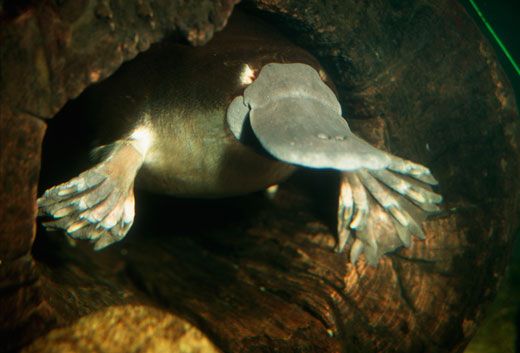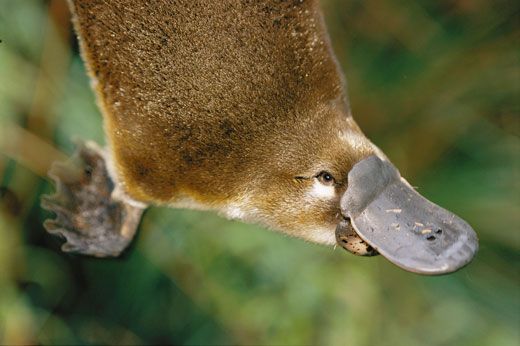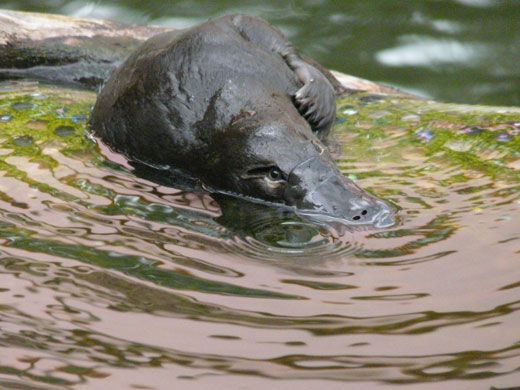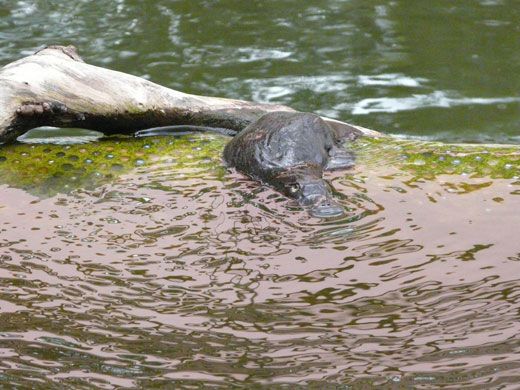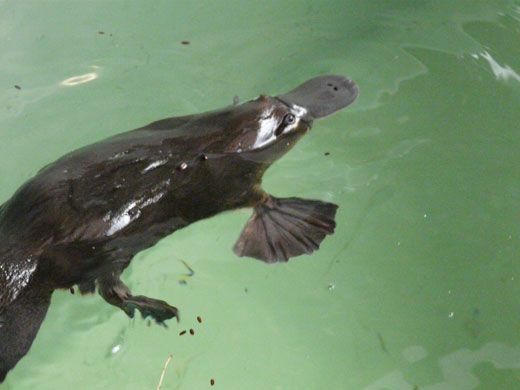On the Evolutionary Gold Mine Down Under
What the platypus and other Australian species reveal about genetics
/https://tf-cmsv2-smithsonianmag-media.s3.amazonaws.com/filer/platypus_631.jpg)
The bizarre-looking platypus has become the poster animal for evolutionary science. It is a living bridge between a hairy lizard that was our forebear and the mammal we are today. But the recently published platypus genome shows that this native of Australia has an amalgam of genes that resemble those of birds, mammals and reptiles. The research has also highlighted that continent's exceptional importance in genetic research.
"Being cut off from the evolutionary mainstream for 80 million years, Australia specializes in really different plants and animals," says Jenny Graves, a professor of comparative genomics at the Australian National University in Canberra . "Our access to kangaroos and [Tasmanian] devils, dragons, kookaburras and old gum trees presents opportunities to make unique contributions to international genomics."
Millions of years ago when Australia drifted away from the super landmass called Gondwana, its flora and fauna were isolated—a seclusion that makes that country akin to a huge evolutionary lab. More than 80 percent of Australian plant and animal species are endemic, meaning they occur naturally only on that continent. That group includes twelve families of flowering plants, four of birds and seven of mammals, some with fetching names like long-tailed pygmy-possum and tube-nosed insectivorous bat.
This biological heritage has been preserved in a mix of genes found in the platypus, which, along with the echidna (or spiny anteater), belongs to a class of mammals called monotremes, because they have only one opening for reproduction and waste elimination.
Like other mammals, the platypus has fur, thermoregulates and lactates, although it doesn't have nipples (the young lap up the milk from the mother's abdomen). But it lays eggs like reptiles and birds and the male platypus carries venom (in spurs in its hind legs), yet another feature found in some reptiles, while its sperm and sexual makeup are close to those of the chicken.
Graves, co-leader of the platypus genome project and one of 26 Australians out of the 100 international scientists who participated, has won several science awards and has been called a "national treasure" for her groundbreaking work on native species. An authority on sex determination, she has spent decades researching the platypus and that iconic marsupial, the kangaroo—and suggested the genomic studies on both.
The platypus genome is now done, sending ripples of excitement through the scientific community. And the kangaroo riddle too is about to be solved, with publication of that animal's genome due in the next few months.
Under a project partly funded by the U.S. National Institutes of Health (NIH), Australian scientists recently finished sequencing the DNA of the tammar wallaby—a small member of the kangaroo family. Graves, director of the ARC Centre of Excellence for Kangaroo Genomics, and her colleagues are in the process of assembling it and using it to explore kangaroo biology and pinpoint important human genes.
Marsupial babies are born prematurely and develop typically in the mother's pouch, which makes them readily available for research into early development. "The marsupials," says Graves, "are more closely related to humans and mice than are monotremes. Their genomes are much more similar to those of placental mammals; same size, same sort of distribution of sequences, genomic imprinting, monophyletic sex chromosomes and at least a version of X chromosome inactivation."
Because both the monotremes and the marsupials are distantly related to us (the platypus split from our common ancestor 166 million years and the kangaroo 146 million years ago) they allow for some clear genetic comparisons. This is not the case with our fellow placentals, like mice, which are so close to us that it's difficult to determine the important genetic regions that remained unchanged over millions of years.
The kangaroo is the second marsupial to be sequenced. The genome of a South American species of opossum was published last year. The scientific community has published twenty mammalian sequences up until now, but that number is expected to increase dramatically as a result of technological advances and international cooperation. After the platypus and the kangaroo, the echidna could well be the next Australian native (it is also in New Guinea) to undergo genetic decoding. ARC Australian Research Fellow Frank Grützner of Adelaide University, who also participated in the platypus project, has been equipping some echidnas with radio transmitters and taking their DNA for sequencing.
But it's not just mammals that are receiving genetic scrutiny. Graves's lab is also looking at alligators, birds such as the emu, and even the nearly extinct corroboree frog.
"The genomics age has really been exciting for us who work on weird animals," she says. "We couldn't be happier."
Weird is certainly the term for the platypus—an Aboriginal legend maintained it was the offspring of a duck and a water rat—but evolution has equipped it nicely for its semi-aquatic lifestyle. Its flat tail acts as a rudder when it swims and is also a storage area for extra food. Its webbed front feet extend to aid in swimming, but on land fold back, allowing the claws to become spades for digging burrows in earth banks around rivers, lakes or streams. When it dives, it closes its nostrils as well as its eyes and ears (it has no outer ear lobe). But its flat bill locates food through unique electrical receptors that detect movement made by small prey such as insect larvae, shrimp and dragonflies.
The platypus is a real loner: mating is its only social interaction. Staff at South Australia's Warrawong Wildlife Sanctuary near Adelaide who have witnessed the mating ritual describe it as a ten-minute water dance, with the male initially holding the female's tail in his mouth as they swim and dive through the water. After mating, each partner returns to its burrow.
"I think the whole rational of using comparisons between distantly related animals to tell us about our own genomes is sometimes a bit lost in the ‘gee-whiz, how weird' aspects of the platypus genome," says Graves. "Comparative genomics is a terribly powerful strategy for exploring our own past."
